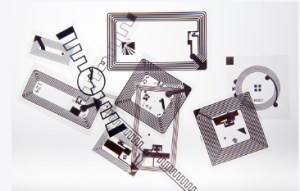RFID readers are useful tools for automated data collection, particularly in retail. They can be powered in various ways, including a battery, USB charger, or line cord.
 An RFID reader is an electronic device that reads tags attached to objects and transmits information to a computer. In addition, the RAMP RFID RFID reader also provides the user with a communication interface and the ability to perform various other functions. It can be used in various environments, from retail stores to military bases.
An RFID reader is an electronic device that reads tags attached to objects and transmits information to a computer. In addition, the RAMP RFID RFID reader also provides the user with a communication interface and the ability to perform various other functions. It can be used in various environments, from retail stores to military bases.
The TX-80 is a solid bet if you are in the market for a rugged industrial power supply that can power various types of readers. It’s got a wide operating input range of 12 to 36 VDC, and it doesn’t require any modifications to your reader.
A PoE Injector is a two-part wonder that converts an ordinary data interface cable into one that delivers both the power and ethernet necessary for your setup. You will need to invest in a couple of Ethernet cables to get the most out of it.
The best part of the PoE Injector is that it can be plugged into a standard power outlet, making it a breeze to implement. Using a PoE Injector will also save you from installing a power cord into your reader’s location, which is especially important in a manufacturing or industrial environment.
There are several RFID readers at various price points, from small handheld devices to full-blown, fixed-up teleconferencing systems. The right reader can provide a wide variety of benefits, including the ability to read and display real-time location data, and can easily be moved around the floor to accommodate changing workflows.
Communication interface
RFID readers are used in many applications, from electronic wallets and attendance systems to warehouse management systems. They have various communication interfaces to read and write data, from USB to RS232. However, managing these portable readers in a dynamic network topology is difficult.
The RS232 interface is a popular option among RFID readers. It has been formulated by the American Electronics Industries Association and is considered a recommended standard. In addition, it enables control over physical and electrical characteristics.
Other common options include I2C, 1-Wire (DALLAS), and Serial UART virtual ports. All these options are secure and allow users to monitor and manage the status of the reader and the network as a whole.
Near Field Communication adds additional capabilities. Using the ISO 14443 or ISO 14443A/B protocols, NFC can exchange data between devices. Unlike other wireless communications technologies, NFC combines a smart card with a reader in one device.
RFID readers have different operating frequencies, ranging from LF to UHF. The RFID application determines the frequency. For example, an LF reader can read tags from 5-15 centimetres away, while a UHF reader can read tags from several meters. Depending on the RFID reader, the reading distance may also vary.
A reader may need to be authorized before it can perform its functions. A proxy server can facilitate this type of authentication. Similarly, a firmware update can be done if a user wants to modify the reader’s functionality.
Mobility
RFID is an acronym for Radio Frequency Identification, a technology used to identify, track, and store information about an object. It is a technology that can be used in several industries, including retail, healthcare, and manufacturing.
RFID readers are devices that can detect and read information from an RFID tag and are available in various applications. They can track vehicles and people, count assets, and even track boxes and pallets. These readers can communicate with a host computer or smart device.
There are different types of RFID readers, and they are classified by mobility, range, and processing. Most readers can perform more than one task at once.
RFID is also becoming increasingly important in healthcare, as it can be used to track patients. Healthcare facilities can leverage its Geiger counter feature.
Some RFID readers are mobile, so drivers and workers can carry them around. It is a very convenient way to perform scans at different locations, which could save time and money. The data can then be submitted to a host system later.
RFID is a reliable, proven technology that is used in a variety of applications. However, the possibility of RFID readers reading personal information has raised privacy concerns. In addition, the technology is still being developed and will likely continue to be introduced.
Tag interrogation
A reader is a device that reads tags in the RFID world. The reader transmits RF waves to the tag and detects the backscattered signal. These waves contain information about the tag. For example, a tag may include a microchip to store data.
Several different types of interrogators are used in the RFID world. Each one is different. Some devices have antennas, while others have other components, such as oscillators. Interrogators can be fixed or mobile and can operate attached to peripheral devices. They can also combine a group of antennas to improve their performance.
An RFID system generally comprises an RFID reader, delineation tags, and a series of peripherals. Depending on the particular application, the reader may have multiple antennas operating in tandem to optimize coverage of a certain region. It can also use information such as signal strength to control its output power.
A reader can also be configured to control its area of successful interrogation. It is typically accomplished by selecting a transmission parameter based on predetermined figures of merit.
For instance, a given reader can be configured to increase its transmitted power by a small increment, which results in a larger overlap with the wanted region. Other parameters might include the number of delineation tags, which can vary depending on the geometry of the wanted region.
An interrogator can communicate with nearby sensors and alert a back-end system of assets and goods. Although it might seem simple, it cannot be very easy.


